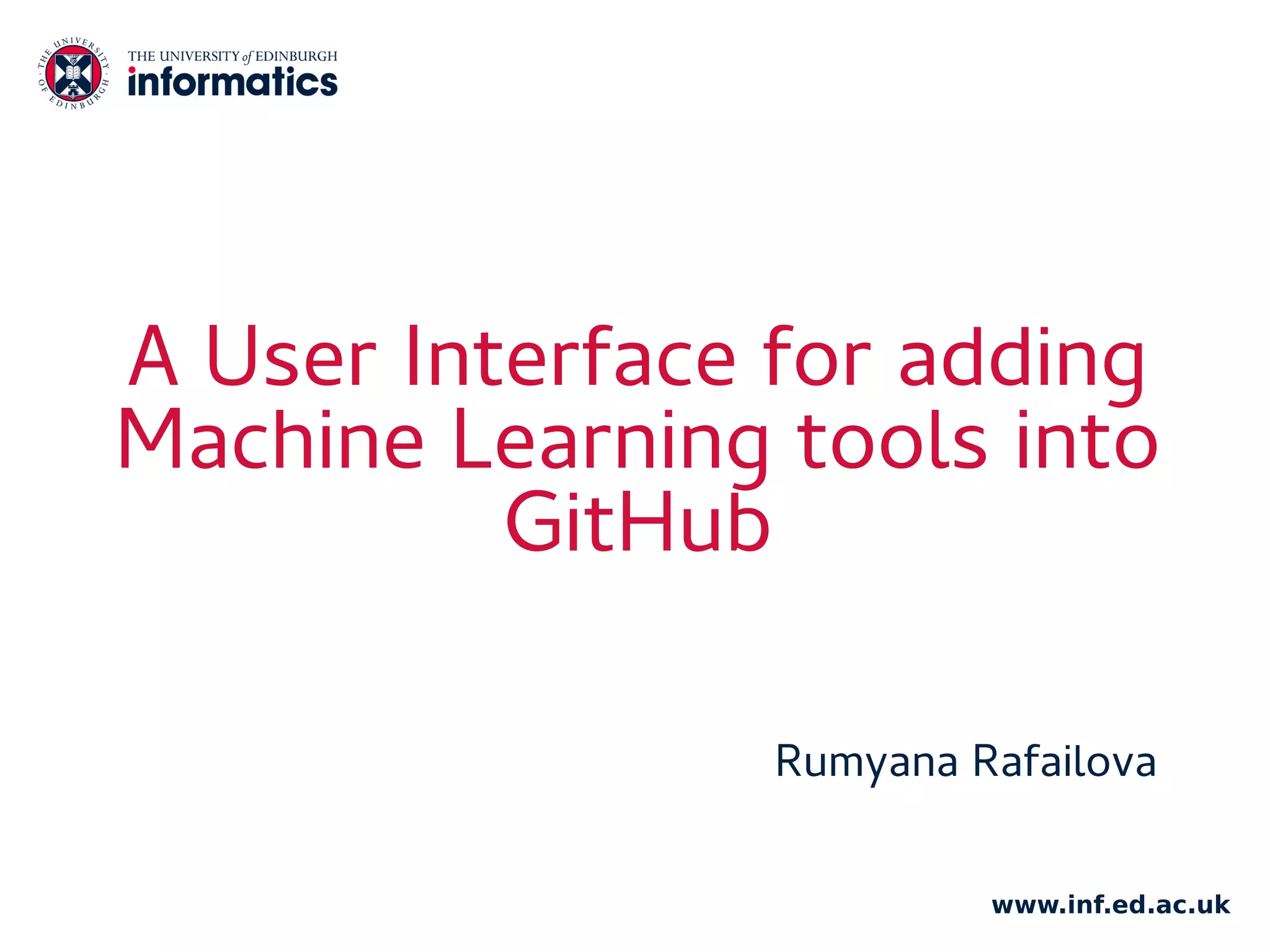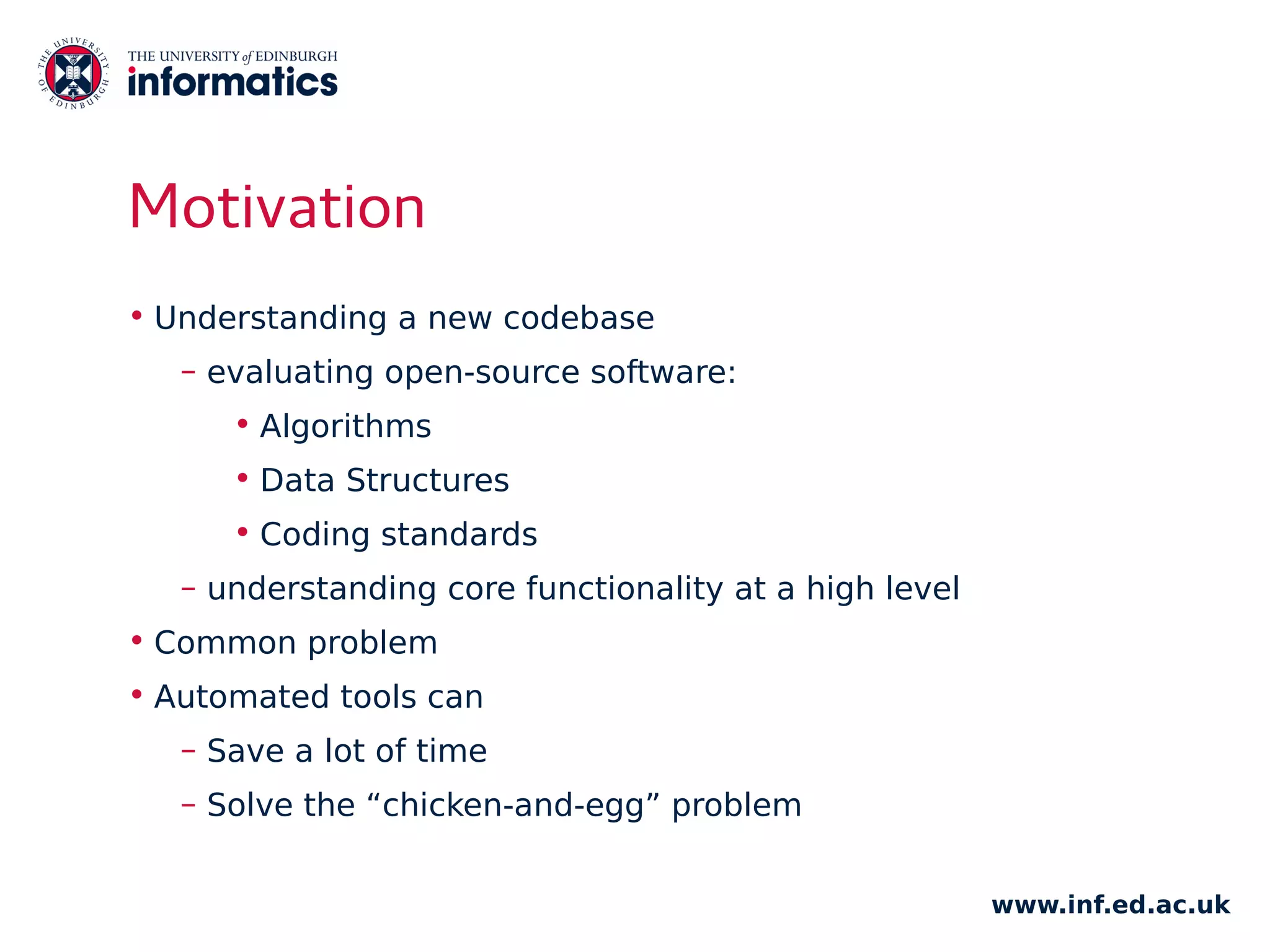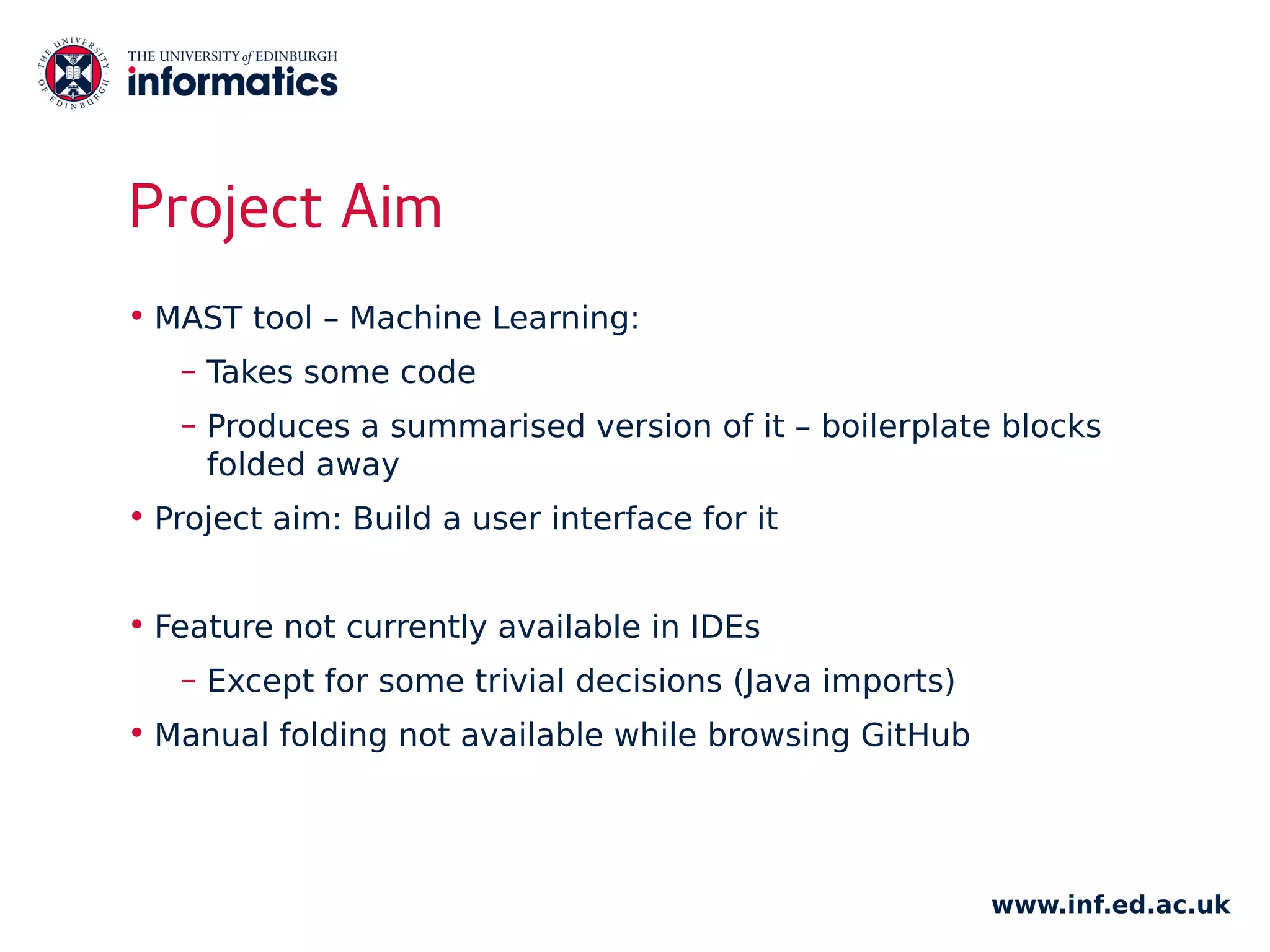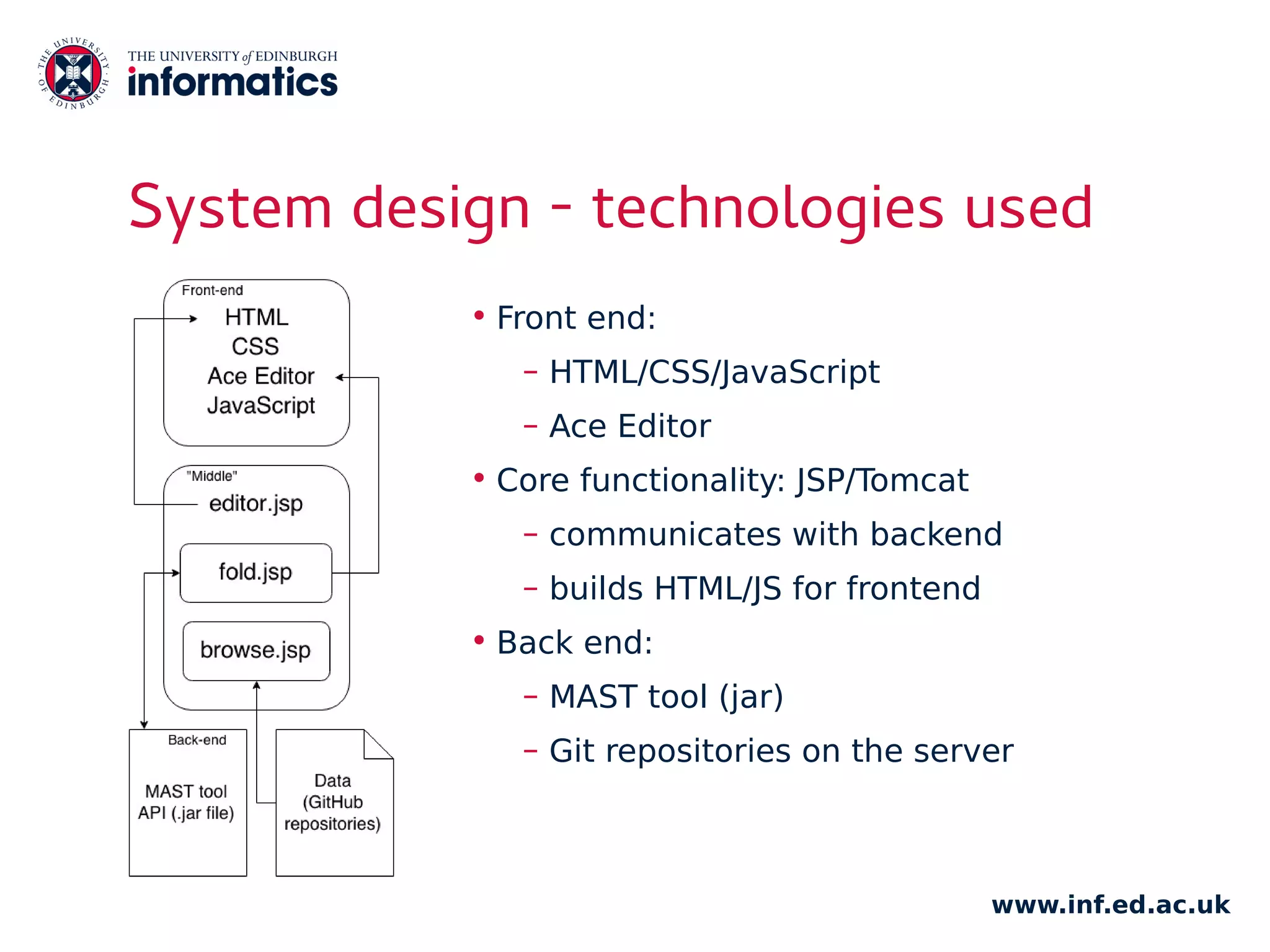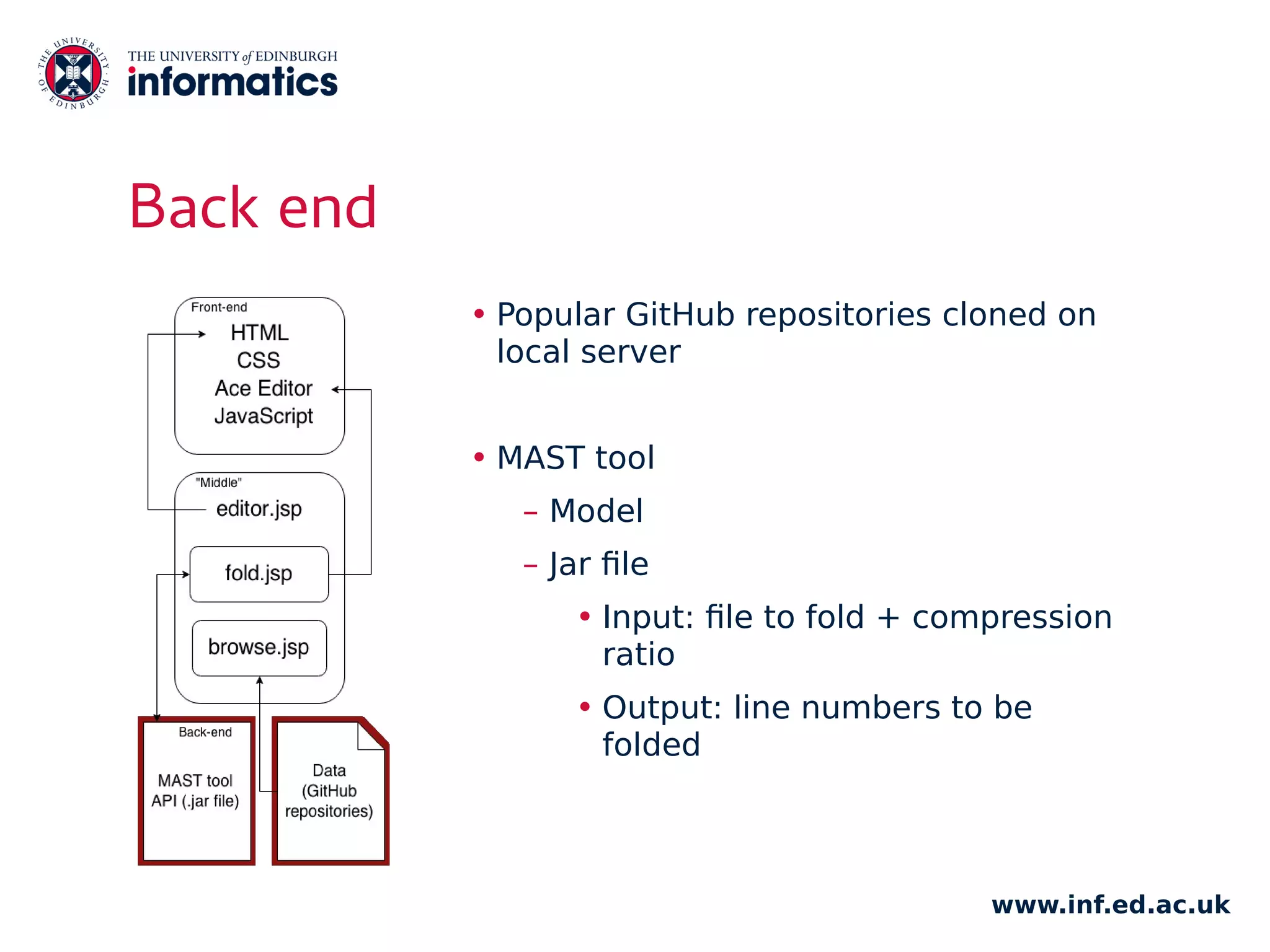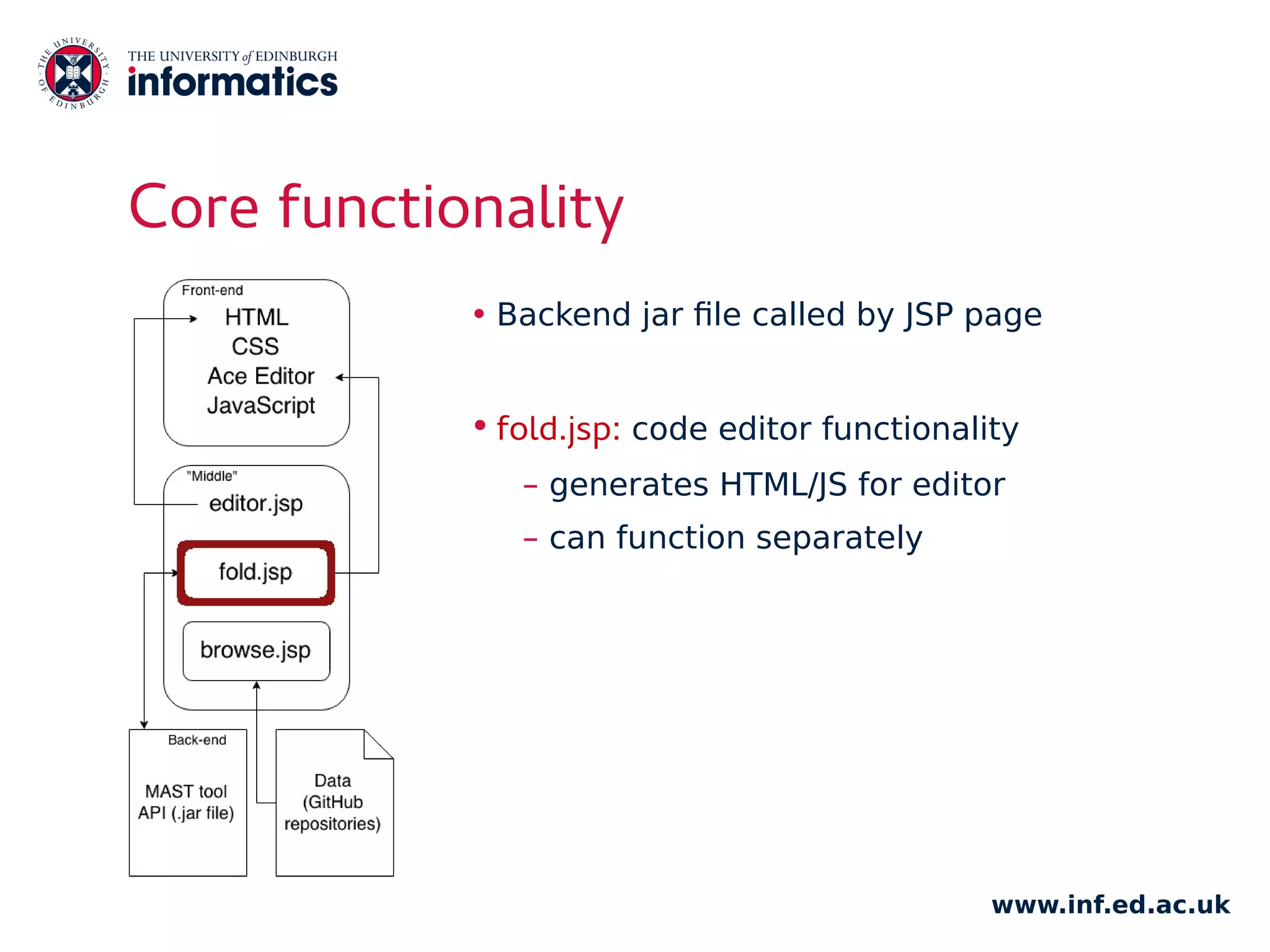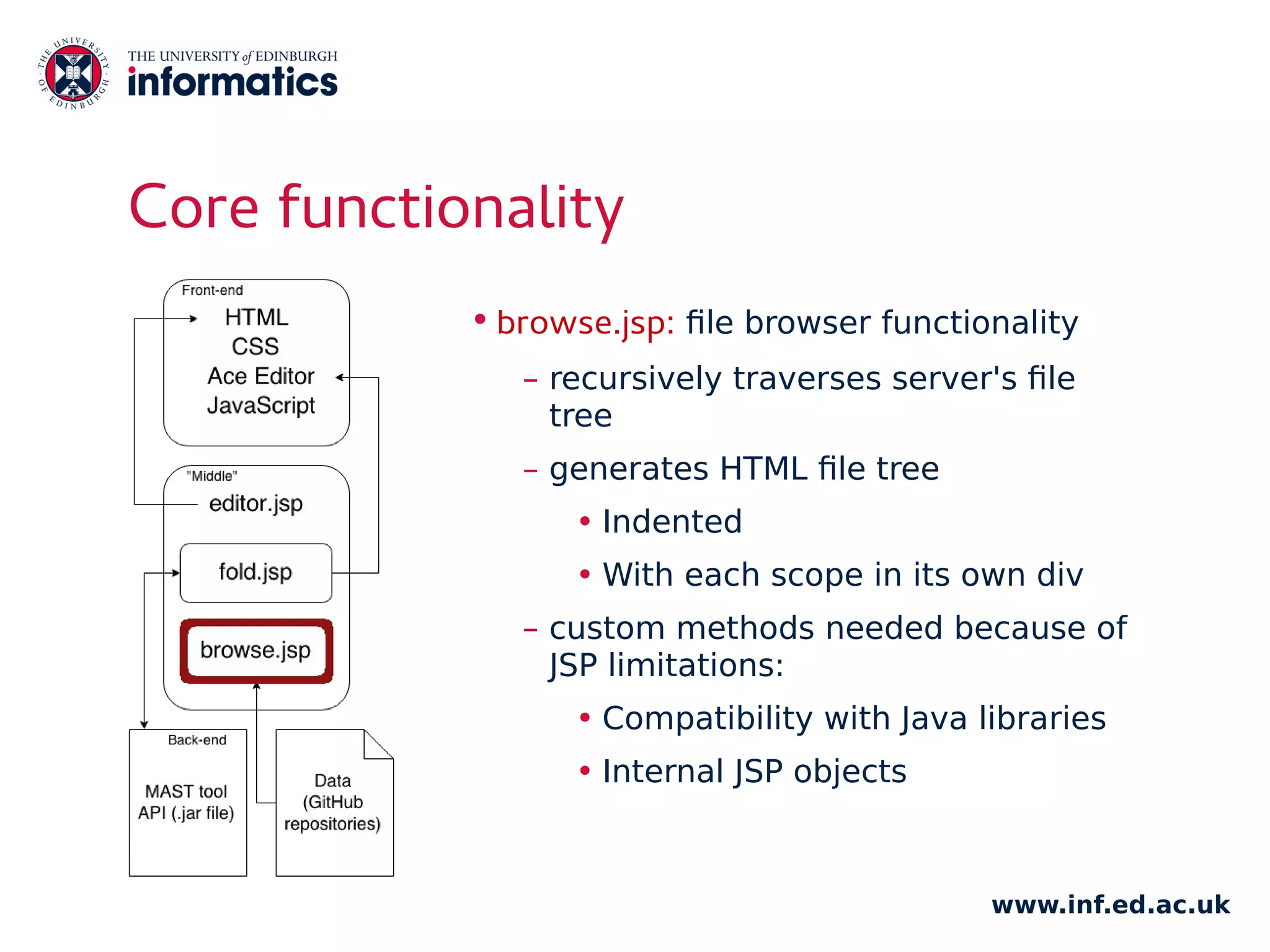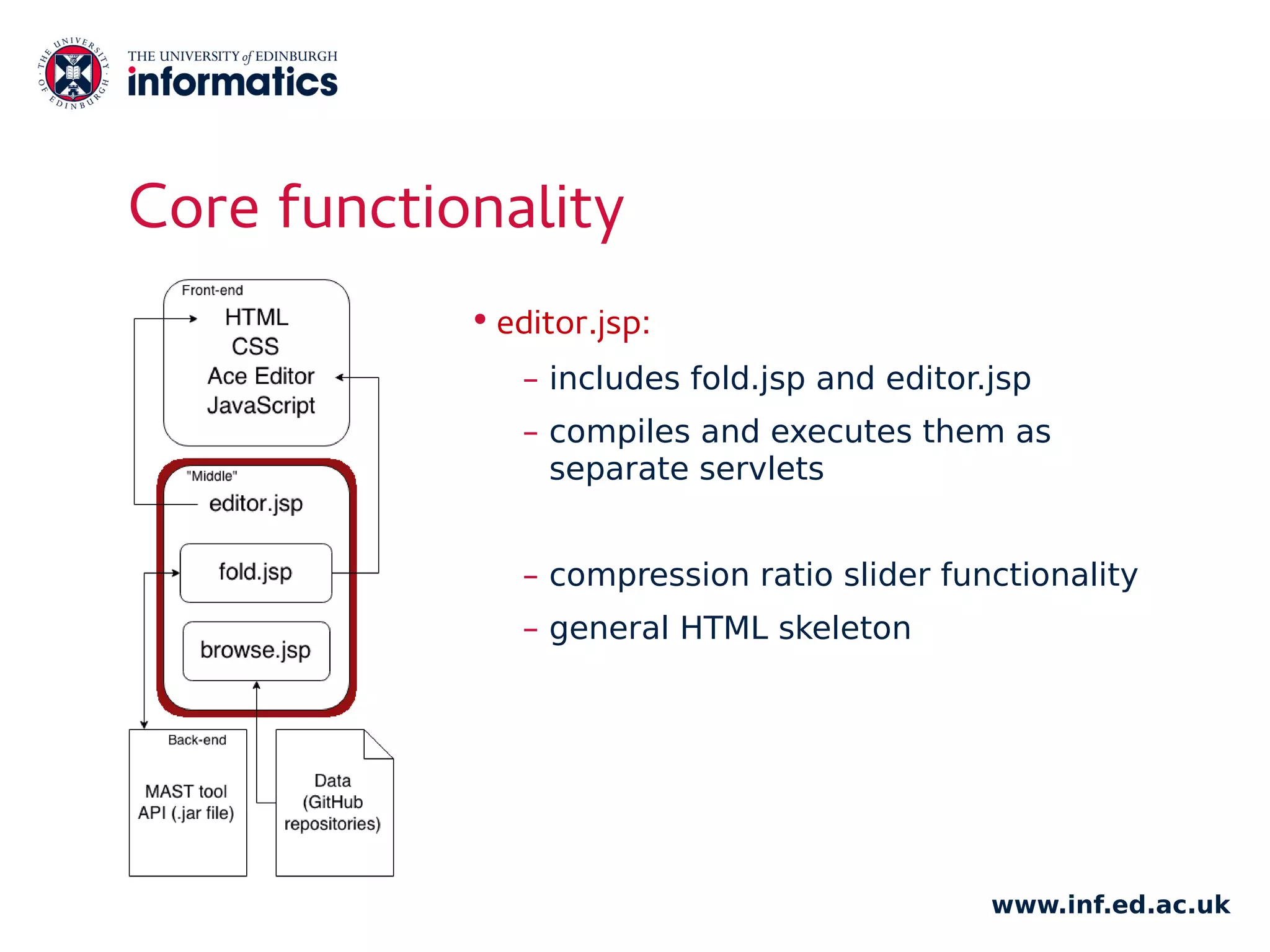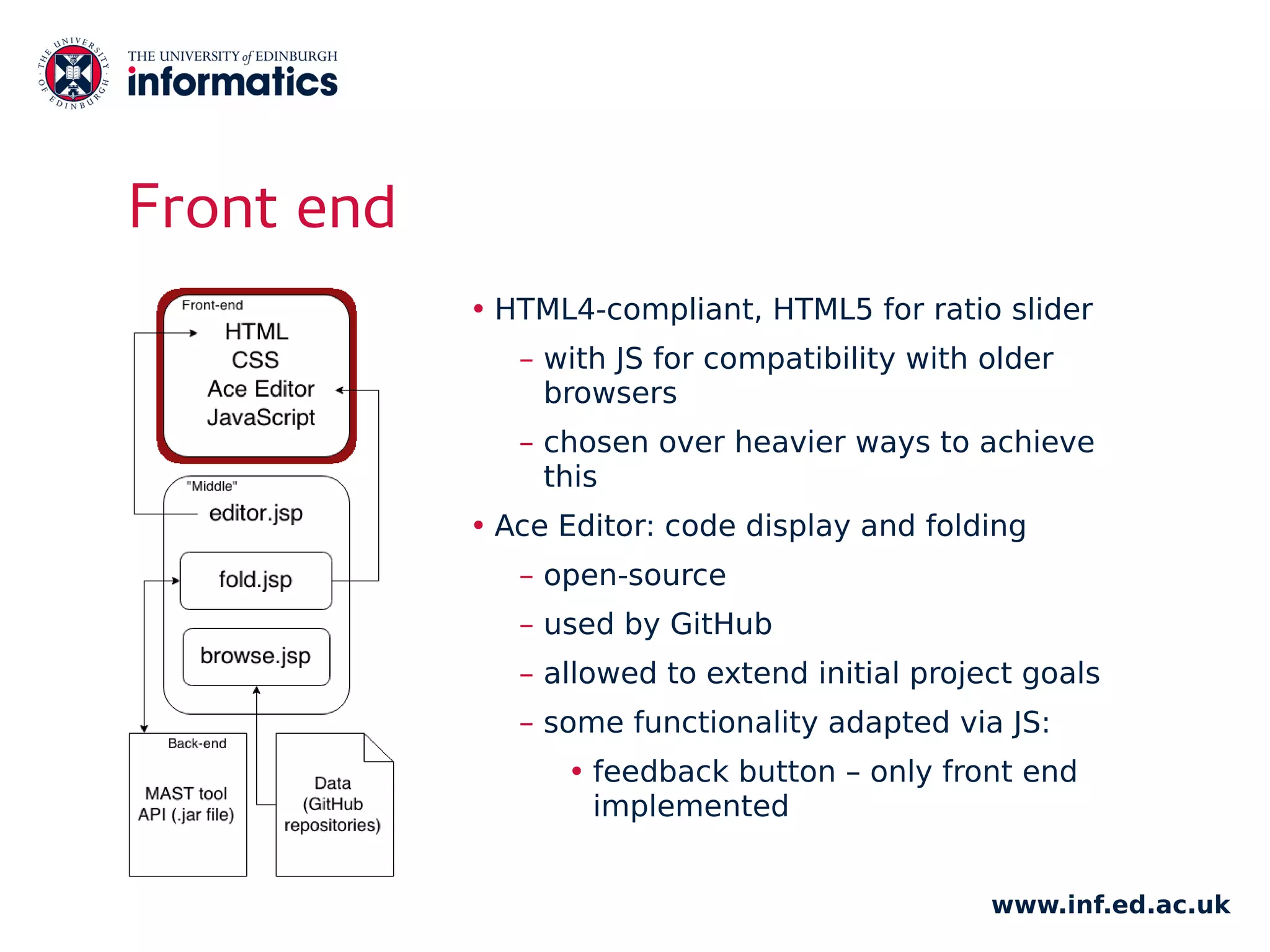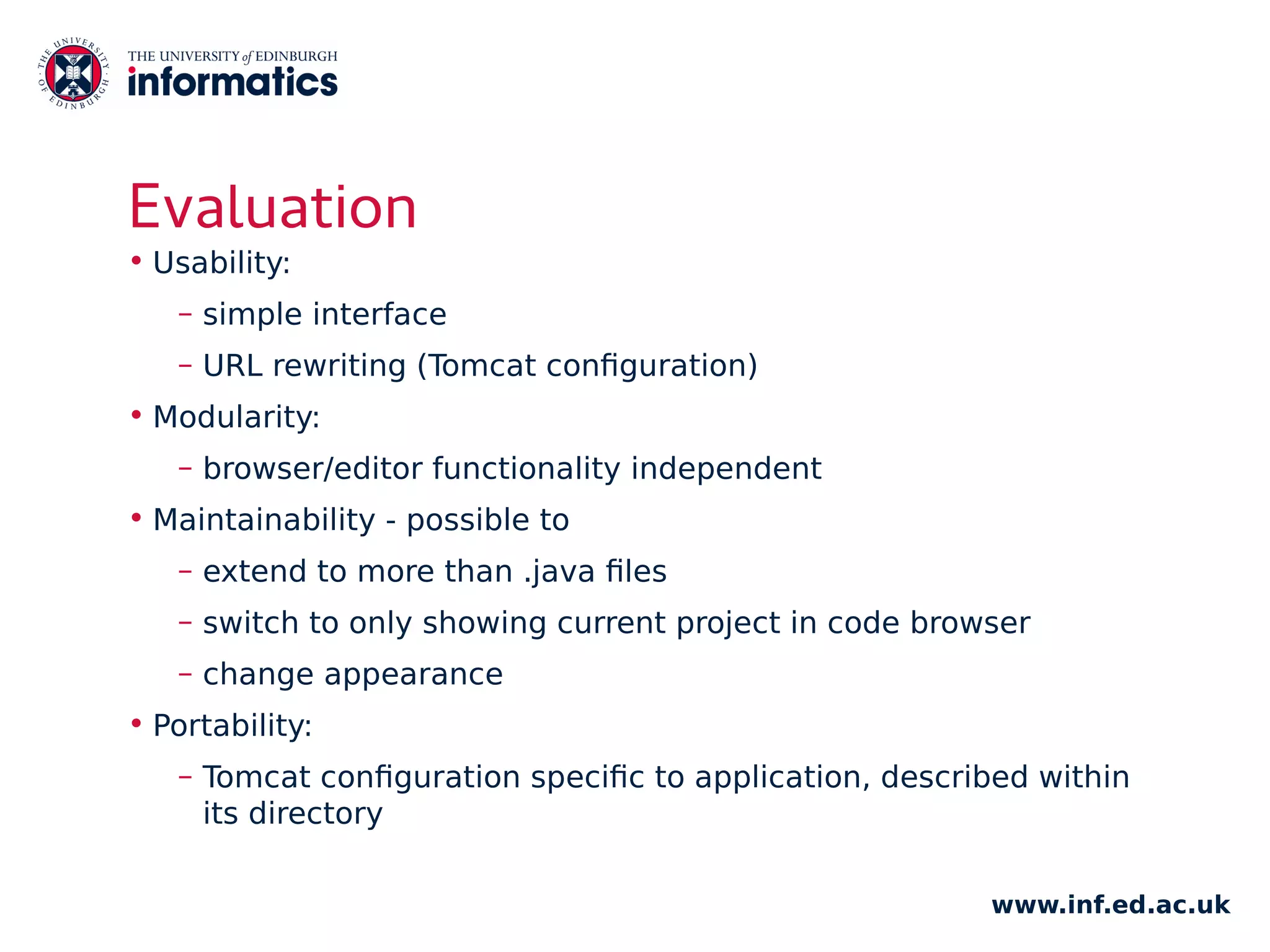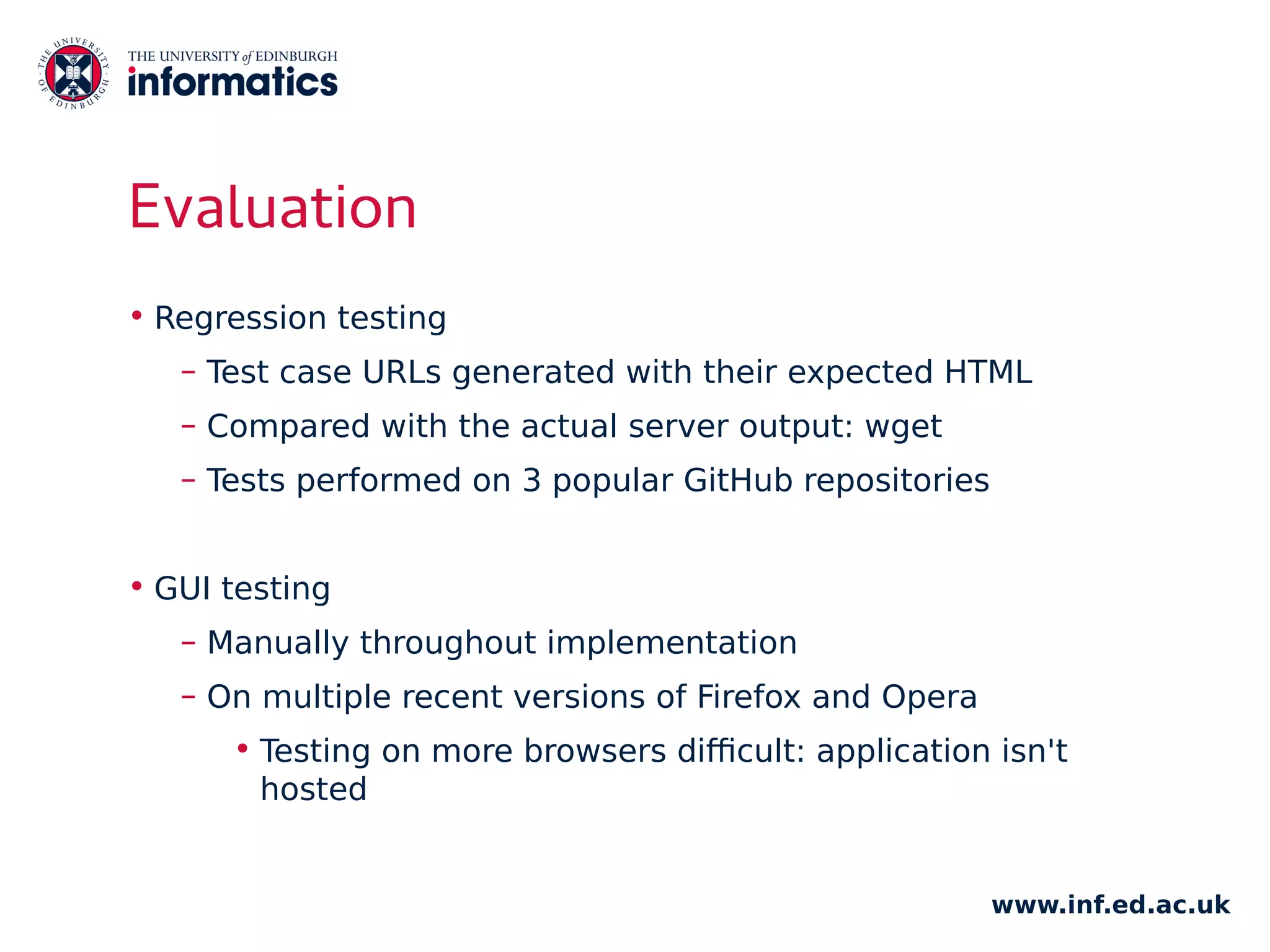The document outlines the development of a user interface for the 'mast' tool, which simplifies the process of understanding and evaluating open-source machine learning code on GitHub. The system employs various technologies, including HTML, JavaScript, and JSP/Tomcat, to provide browsing and code folding functionalities, facilitating easier interaction with codebases. Additionally, it discusses usability, modularity, and testing processes validated through practical applications on popular repositories.
